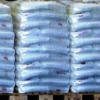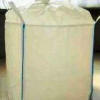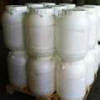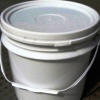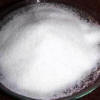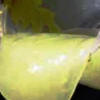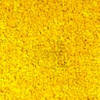| Annie Chemie P Ltd is engaged in manufacture of Hydraulic Fracking Chemicals or Shale Gas Fracturing Chemicals. We offer Encapsulated Gel Breaker, Boron and Zirconium based Crosslinkers for Guar, Ammonium Persulfate, Potassium Persulfate, Friction reducer, Corrosion Inhibitor, Clay Stabilizer, Flow Diverting Agent, Scale Inhibitor, KCl Substitute, DDAC BHMT THPS ATMP Glutaraldehyde, Sodium Glutaraldehyde Bisulfite Biocides, is offered. All the Information on Physics, Chemistry, Applications, Uses and Technology on Manufacture of Slick Water is in these pages. |
Encapsulated Gel Breaker, Boron and Zirconium based Crosslinkers for Guar, Ammonium Persulfate, Potassium Persulfate, Friction Reducer, Diverting Agent, Corrosion Inhibitor, Clay Stabilizer, Scale Inhibitor, KCl Substitute, DDAC BHMT THPS Glutaraldehyde, Sodium Glutaraldehyde Bisulfite Biocides, Potassium Hydroxy Ethylidene,1-Diphosphonic Acid, HEDP-Kx etc
A bigger list of chemicals used in slick water and guar based fracing can be seen on Muby Chemicals Fracturing Chemicals webpage.
Oil and Gas can be defined in chemistry as hydrocarbons. It is made up of hydrogen and carbon. The sun is shining over the earth since millions of years. Plants trees and micro-organisms were growing by absorbing solar energy. These living plants died after a small cycle and kept decaying. The decaying material percolated down the earth crust. With several cycles of movement, due to bacteria, chemical reactions, and earthquakes and so on, the decaying material turned in to oil and gas. The oil and Gas formed by decaying organic matter seeps in the ground. This under ground oil is not there as pools or rivers. It is contained in porous rocks. The oil is trapped in layers of rock, with and without permeability at different depths and up to different lengths side ways. When the porosity is continuous, over a long range, it is called permeable rock and then the oil is easily mine-able by vertical drilling. When the permeability is low, as in shell-gas of United States, advanced mining techniques are needed. Here comes the need for horizontal drilling and fracking or fracturing.
According to the United States Environmental Protection Agency (EPA) hydraulic fracturing is a process to stimulate a natural gas, oil, or geothermal energy well to maximize the extraction. The broader process, however, is defined by EPA as including the acquisition of source water, well construction, well stimulation, and waste disposal.
Vertical drilling for oil is very similar to drilling water well. However the oil is a little too far below the earth, say 3 kilometers (about 2 miles) or more. Water table can be up to 500 feet or so. The oil-well driller is trained to ensure, that the ground water does not get contaminated by oil or gas. After a vertical drilling, some horizontal fracturing is done to get good yield. Oil and Gas reside in the pores of the reservoir rock. There must be continuity or permeability in the pore-space, in order to be mine-able. If the porosity or permeability is low, it is difficult to extract the oil. To increase the permeability, fracturing techniques are used.
A hydraulic fracture is formed by pumping the fracturing fluid into the well-bore at a rate sufficient to increase pressure down-hole at the target zone (determined by the location of the well casing perforations) to exceed that of the fracture gradient (pressure gradient) of the rock. Fracturing splits open the reservoir rocks by use of fluids, pressure inside by powerful pumps. With high pressure pumps sand along with fracturing fluid is pumped in the well. The pressure is maintained until the fracture reaches the desired length. Suspended sand contained in thick water based fluid fills the fracture (prevent it from collapsing) and then the pressure is released. There are mainly two fracturing techniques.
Shale gas fracturing or hydraulic fracturing is the process in which sand and small amount of chemicals with water are pumped in through a hole in the earth crust by high pressure pumping. The fluid injected into the rock is slurry of water, proppants, and chemical additives. A proppant (sand or ceramic particles) is a material that will keep an induced hydraulic fracture open, during or following a fracturing treatment, and can be gel, foam, or slick-water based. Chemicals are generally less than 0.5% of the total slurry.
Guar based fracturing: In guar based method sand particles are suspended in thickened guar slurry. The chemicals as required are added to the slurry. The gel or thickening agent is formed with one of the many methods:
Conventional linear gels: These gels are cellulose derivatives (carboxymethyl cellulose, hydroxyethyl cellulose, carboxymethyl hydroxyethyl cellulose, hydroxypropyl cellulose, methyl hydroxyl ethyl cellulose), guar or its derivatives (hydroxypropyl guar, carboxymethyl hydroxypropyl guar)-based, with other chemicals providing the necessary chemistry for the desired results.
Borate cross-linked fluids: These are guar-based fluids cross-linked with boron ions. These gels have higher viscosity at pH 9 onwards and are used to carry proppants. After the fracturing job the pH is reduced to 3–4 so that the cross-links are broken and the gel is less viscous and can be pumped out. We offer 4% and 5% Boron based Crosslinker for Guar Gel in Hydraulic Fracturing
Organometallic cross-linked fluids: Zirconium, chromium, antimony, titanium salts are known to crosslink the guar-based gels. The cross-linking mechanism is not reversible. So once the proppant is pumped down along with the cross-linked gel, the fracturing part is done. The gels are broken down with appropriate breakers. We offer Zirconium based crosslinker as powder, or as a solution in solvent and encapsulated temperature dependent release granules
Aluminum phosphate-ester oil gels: Aluminium phosphate and ester oils are mixed to form cross-linked gel. These are one of the first known gelling systems.
After the fracture is complete, the viscosity of the fluid is decreased by Oxidizing Agents often Coated or Encapsulated Gel Breaker and the collapse of fracture is controlled by sand particles. With high pressure pumps, sand along with thick fracturing fluid is pumped in the well. The pressure is maintained until the fracture reaches the desired length. Suspended sand contained in thick water based fluid fills the fracture (prevent it from collapsing) and then the pressure is released.
Slick-water based fracturing: The shortage of guar gum is severely affecting the fracking industry. Almost 95% of the guar is produced in India and Pakistan. The prices of guar, increased several times its base price, after its use in fracturing started. To beat this trend, slick water program was pursued by drilling industry. This method use much thinner liquid to transport proppants. Special light-weight and low-density small-diameter ceramic proppants and other types of proppants are developed for slick water use.
A common practice in the hydraulic fracturing of gas-producing reservoirs is the use of non-viscous "slick-water" fluids pumped at high rates (> 60bpm) to generate narrow fractures with low concentrations of proppant. Slick-water fracing is a basic form of well stimulation. For slickwater it is common to reduce the proppant concentration temporarily to ensure the well is not overwhelmed with proppant causing a blocks. As the fracturing process proceeds, viscosity reducing agents such as oxidizers and enzyme breakers are added to the fracturing fluid to deactivate the gelling agents. Sometimes pH modifiers are used to break down the crosslink at the end of a hydraulic fracturing job. At the end of the job the well is commonly flushed with water (often blended with a friction reducing chemical) under pressure.
Frac fluid is composed primarily of water and sand, over 99.5% actually. Slick-water fracturing involves adding small amounts of chemicals to water to increase the fluid flow. Slick-water fluid can be speed-pumped down a well-bore as fast as 100 bbl/min. allowing a higher-pressure shale fracture. Slickwater typically uses more water than earlier fracturing methods--between one and five million gallons per fracing operation. Chemicals like Friction reducer, Corrosion inhibitor, Scale inhibitors Biocides, Breaker, Clay stabilizer, Cross-linker, pH buffers, etc. are added as required.
The most critical chemical additive for slickwater fracture execution is the friction reducer (FR). The high pump rates for slickwater treatments (often 60-100 bbl/minute) necessitate the action of FR accitives to reduce friction pressure up to 70%. Common chemistries for friction reduction include polyacrylamide derivatives and copolymers added to water at low concentrations.
Advantages and disadvantages of slickwater fracturing fluids method compared to that of gelled fracturing fluids are detailed below:
Advantages:
High conductivity, due to no filtercake present.
Reduced salinity and contaminants.
Reduced fluid additives required for slickwater fracturing fluid.
Lower cost.
No Boron concern
Disadvantages:
Larger volumes of water often required for fracture.
Larger power requirement.
Limited fracture-width.
Disposal and/or reuse of water.
Poor fluid efficiency, proppant transport.
Concern of breaking friction reducers.
Slick Water & Fracking Chemical Manufacturers:
Annie Chemie P Ltd.
Offered from UAE, USA and India.
TELEPHONE: (OFFICE) 91-22-23770100, 23726950; FAX: 91-22-23728264
Between 5 Hour GMT to 12 Hour GMT

e-mail: info@anniechemie.com
Exports to USA, Canada, UAE, Dubai, South Africa, Tanzania, Kenya, Nigeria, Egypt, Uganda, Turkey, Mexico, Brazil, Chile, Argentina, Europe Netherlands, Italy, Spain, Germany, Portugal, France, Malaysia, Indonesia, Thailand, Ukraine Korea, Japan, Vietnam, etc.
Copyright and Usual Disclaimer is Applicable. 12 February, 2022


